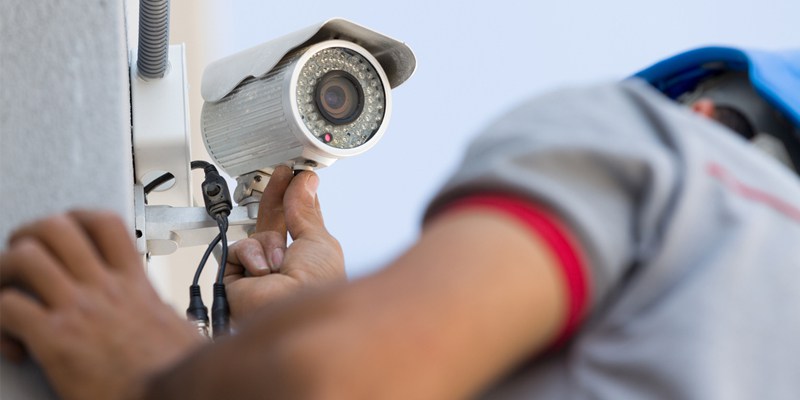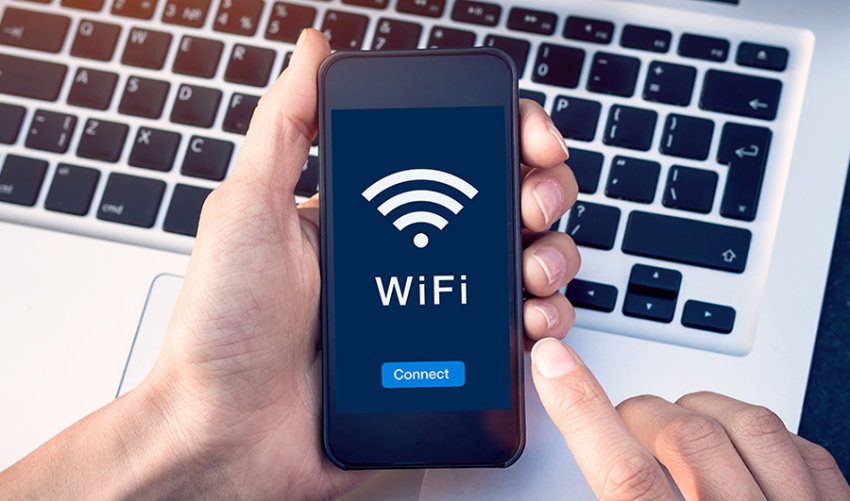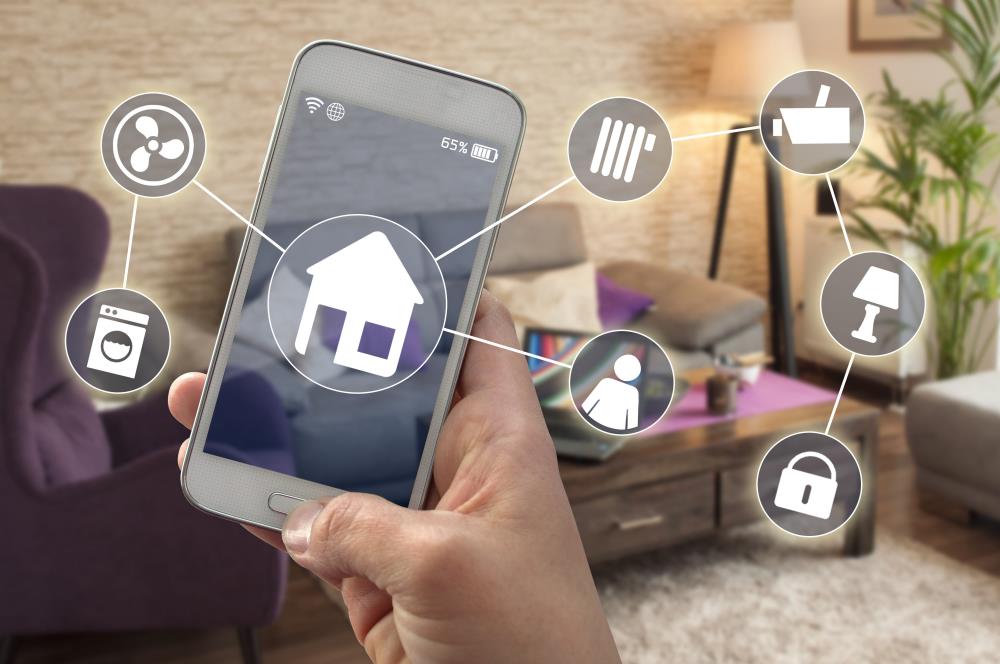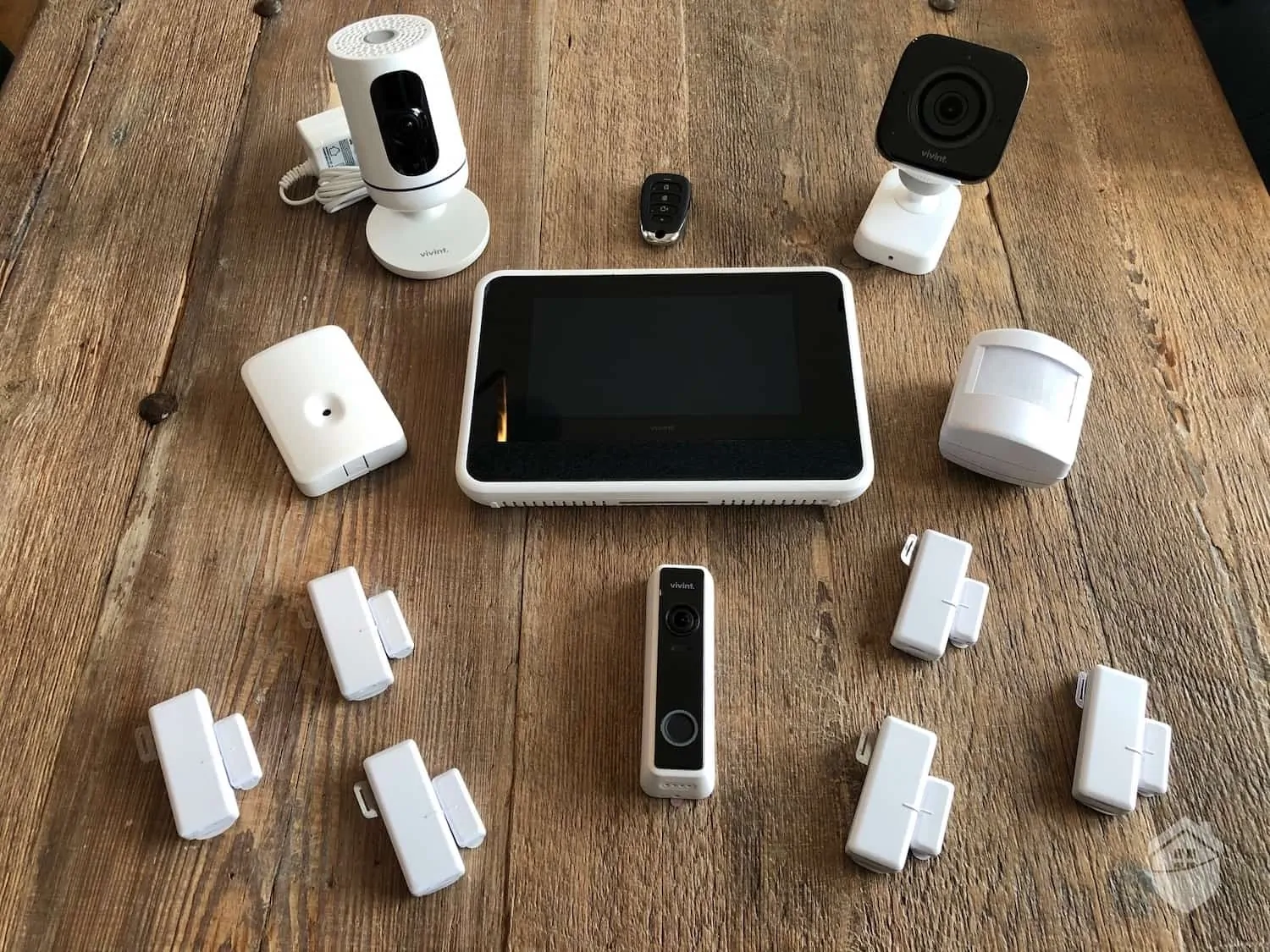Contents
Introduction
The Importance of Security Cameras for Home Safety
As a homeowner, one of the most important things you can do is to make sure that your family and belongings are safe. One way to achieve this is to install security cameras in and around your home. Security cameras help you keep an eye on your home, deterring potential burglars, and keeping your family members safe.
According to a survey conducted by the National Crime Prevention Council (NCPC), homes without security systems or cameras are 300% more likely to be burglarized than homes with such systems. Additionally, a study conducted by the University of North Carolina at Charlotte revealed that 60% of convicted burglars stated that they would avoid homes with visible security cameras.
Brief Overview of What Will Be Covered in The Article
This article will provide an in-depth guide on how to choose the right security camera for your home. We will discuss different types of cameras, features you should consider when choosing a camera, placement and installation tips, cost considerations, reviews and recommendations from experts. Whether you’re looking for an indoor or outdoor camera or wired vs wireless or dome vs bullet cameras – we got you covered!
We will also delve into key features such as resolution and clarity, night vision capabilities, motion detection sensors, audio recording options and storage capacity. Choosing the right camera is more than just picking out something based on its price tag; it’s also about understanding what features are available in today’s market so that you can make informed decisions about which type best fits your needs.
By reading this article carefully, homeowners can get a better understanding of what they need from their security system so they can ultimately choose the right one for their family’s safety. With so many different options available on the market today–choosing among them may seem overwhelming at first but by considering all the factors involved and doing your research, it can actually be quite a simple process.
Types of Security Cameras
When it comes to choosing the right security cameras for your home, the first thing you need to consider is what type of camera you need. There are many different types of security cameras available on the market today, each with their own set of features and benefits.
Indoor vs Outdoor Cameras
The first decision you will need to make is whether you need an indoor or outdoor security camera. Indoor cameras are designed for use inside your home, while outdoor cameras are weatherproof and can be used outside your home. If you want to monitor activity inside your home, an indoor camera will do the trick.
These cameras are typically smaller and less intrusive than outdoor cameras. They also don’t require as much protection from the elements since they won’t be exposed to rain or extreme temperatures.
If you want to monitor activity outside your home, however, an outdoor camera is a must-have. These cameras are larger and more robust than indoor models, with weatherproofing that ensures they can withstand rain, snow, and extreme temperatures.
Wired vs Wireless Cameras
The next decision you will need to make is whether you want a wired or wireless security camera. Wired cameras require a physical connection to your home’s electrical system in order to operate.
Wireless cameras use Wi-Fi or cellular technology to connect to your network without any physical connections. Wired cameras offer a more reliable connection than wireless models since there’s no risk of interference from other devices on your network.
They’re also typically less expensive than wireless models since they don’t require as much technology. Wireless cameras offer greater flexibility in terms of placement since they don’t require a physical connection.
They’re also easier to install and set up since there aren’t any wires to worry about. However, they can be more prone to interference from other devices on your network, which can lead to connectivity issues.
Dome vs Bullet Cameras
You will need to decide whether you want a dome or bullet camera. Dome cameras are typically mounted on the ceiling and offer a wide-angle view of the area being monitored. They’re less obtrusive than bullet cameras and are often used in businesses as a way to monitor employee behavior.
Bullet cameras are typically mounted on walls and offer a more focused view of the area being monitored. They’re more obtrusive than dome cameras but can be useful for monitoring specific entry points such as doors or windows.
Overall, the type of security camera you choose will depend largely on your specific needs and preferences. Indoor vs outdoor, wired vs wireless, and dome vs bullet are all important considerations that will help you choose the right camera for your home.
Features to Consider
When it comes to choosing a security camera for your home, there are several features you should consider. These features will help you determine which camera is best suited for your needs.
Resolution and Clarity
One of the most important features to consider when choosing a security camera is resolution and clarity. This refers to the number of pixels in the image and how clear it appears.
Higher resolution cameras will produce clearer images, allowing you to see more detail. For example, a 1080p camera will provide better picture quality than a 720p camera.
It’s also important to consider the frame rate when looking at resolution and clarity. A higher frame rate means that more images are captured per second, resulting in smoother video playback.
Night Vision
Another important feature to consider is night vision. This is especially important if you want your security camera to monitor your property at night or in low-light conditions. Night vision cameras use infrared technology to capture images in almost complete darkness.
It’s important to note that not all night vision cameras are created equal. Some cameras have better night vision capabilities than others, so be sure to check the specifications before making a purchase.
Motion Detection
Motion detection is another key feature that can help alert you when something is amiss on your property. When motion is detected, the camera will automatically begin recording or send an alert notification to your phone or email. Some cameras offer customizable motion detection settings, which allow you to adjust sensitivity levels or set up specific areas that should trigger motion detection alerts.
Audio Recording
Audio recording can be a useful feature if you want to hear what’s happening on your property as well as see it. Some cameras come with built-in microphones that allow for two-way audio communication between yourself and anyone on your property. It’s important to note that audio recording capabilities may not be legal in all jurisdictions, so be sure to check your local laws before purchasing a camera with this feature.
Storage Options
You’ll want to consider storage options when choosing a security camera. Some cameras come with built-in storage, while others require an external memory card or cloud storage subscription.
Cloud storage options can be convenient because they allow you to access footage from anywhere with an internet connection. However, they can also come with monthly fees and may not provide as much control over your footage as local storage options.
Overall, considering these features will help you choose the right security camera for your home. Be sure to weigh the pros and cons of each feature and choose a camera that meets your specific needs.
Placement and Installation Tips
Choosing the Right Location for Your Camera
Choosing the right location for your camera is crucial to ensure that it captures the activity you want to monitor. You should consider placing cameras in areas where they can easily detect any suspicious activity. For instance, you may want to place a camera near your front door or gate, back door, windows, and other vulnerable areas of your home.
You should also consider the distance between the camera and the area you want it to monitor. A close-up view will require a different placement than a broader view.
It’s important to ensure that your cameras are not obstructed by any objects that could interfere with their view. Try to avoid placing them behind trees or bushes as these can cause shadows or movement which could trigger false alarms.
Mounting Options
There are various mounting options available when it comes to security cameras. It’s essential to choose a mounting option that best suits your needs and preferences. For instance, you can mount your camera on a wall or ceiling, on a tripod stand or shelf if you prefer flexibility in positioning them.
You should also consider whether you want fixed cameras or those with adjustable angles for better coverage of different areas. Some security cameras come with innovative mounts that allow them to be attached anywhere from flat surfaces like walls and ceilings to awkwardly-shaped surfaces like poles.
Power Source Considerations
When choosing security cameras for your home, you need to decide whether they’ll be hardwired into an electrical outlet or battery-powered (or both). Hardwired systems have more consistent power supply but are more challenging for DIY installation because they require wiring into the electrical system of your home. Battery-powered systems offer greater flexibility in choosing placement locations without worrying about wires getting in the way; however, battery life varies widely depending on how often footage is recorded or viewed, making them less reliable for 24/7 surveillance.
Another option is to choose hybrid cameras that offer both hardwired and battery-powered options. These are more versatile, but they can be more expensive than the other two options.
Factors to Consider When Placing Indoor Cameras
Indoor cameras are typically placed in areas where there’s frequent activity, such as living rooms and entryways. For these areas, it’s important to choose a camera with a wide-angle lens and high resolution so you can capture detail even in low light conditions.
You should also consider the height of your camera. Typically, indoor cameras should be placed higher up on walls (around 7ft) to avoid any potential interference with furniture or people walking by.
Factors to Consider When Placing Outdoor Cameras
Outdoor cameras are designed to withstand harsh weather conditions like rain and snow while providing high-quality video footage. It’s important to consider the type of weather your area experiences before purchasing an outdoor camera.
When placing outdoor cameras, consider mounting them at a height that covers a larger area while making sure they still provide clear images of visitors who may come within range. You should also look for features like motion-activated recording and night vision capabilities so that you don’t miss anything even in low light conditions.
Cost Considerations
When it comes to choosing security cameras for your home, cost is a major factor to consider. However, it’s important to remember that the price of a camera doesn’t always reflect its quality or effectiveness. Therefore, it’s essential to understand the different pricing tiers and what features you can expect from each.
Budget-friendly options
If you’re on a tight budget but still want to secure your home, there are several budget-friendly options available. These cameras typically range from $20-$50 and offer basic features such as motion detection and live streaming.
They are often wireless and easy to install yourself, making them an excellent option for those who are new to home security systems. One popular option in this category is the Wyze Cam 1080p HD Indoor Smart Home Camera.
It offers high-quality video streaming with night vision capabilities and two-way audio communication, all for under $25. Another great option is the YI Dome Camera which offers 360-degree coverage at an affordable price.
Mid-range options
For those willing to spend a bit more on their security system, mid-range options offer additional features that can enhance your surveillance efforts. Mid-range cameras typically range from $50-$150 and may include more advanced motion detection capabilities, better image quality with higher resolution, and more storage options.
One popular choice in this category is the Blink XT2 Outdoor/Indoor Smart Security Camera which offers weatherproofing for outdoor use along with extended battery life and customizable motion zones for optimal coverage. Another good choice is the Arlo Q Indoor Camera which offers 1080p HD video streaming with two-way audio communication.
High-end options
For those who prioritize privacy or need high-end security features such as facial recognition or license plate tracking, high-end cameras may be worth the investment. High-end cameras typically cost over $200 and offer the most advanced features, such as cloud storage, more extensive coverage capabilities, and heightened image quality.
One popular high-end option is the Nest Cam IQ Outdoor Security Camera which offers 4K video resolution and facial recognition technology for added security. Another good choice is the Axis Q3505-VE Network Camera which offers up to 60 frames per second video resolution with advanced analytics capabilities.
Conclusion
When it comes to choosing security cameras for your home, cost is a crucial factor to consider. There are budget-friendly options available that provide basic features such as motion detection and live streaming. Mid-range options offer additional advanced features such as higher image quality and customizable motion zones.
High-end options come with the most advanced security features like facial recognition technology or license plate tracking. It’s essential to evaluate your needs and budget comprehensively before making a final decision on which camera to purchase.
Reviews and Recommendations from Experts
When it comes to choosing the right security camera for your home, it can be overwhelming to navigate the vast number of options on the market. To help narrow down your choices, we have researched and compiled a list of top-rated security cameras recommended by experts in the industry.
Top-rated security cameras on the market
The Nest Cam IQ Indoor is a highly rated indoor security camera that boasts a 4K sensor, advanced algorithms for facial recognition, and alerts sent directly to your phone when motion or sound is detected. It also has a built-in Google Assistant for added convenience.
The Arlo Pro 4 Spotlight Camera is an outdoor camera that provides clear 2K video footage and includes two-way audio for communication with visitors. It also features a spotlight that can be triggered by motion or remotely from your app.
The Ring Video Doorbell Pro is another popular option that doubles as both an outdoor security camera and doorbell. With customizable motion zones and alerts sent straight to your phone, you can keep an eye on who’s at your front door no matter where you are.
Expert recommendations based on specific needs or preferences
If you’re looking for a budget-friendly option, the Wyze Cam V3 offers impressive features such as high-quality video footage with night vision capabilities at a fraction of the cost of other cameras in its class. If you’re interested in smart home integration, consider the Amazon Cloud Cam which seamlessly integrates with Alexa for voice commands and remote viewing through compatible devices like Fire TV Stick or Echo Show. For those concerned about privacy, the Eufy Security Indoor Cam 2K Pan & Tilt is recommended by experts for its local storage option which means all recorded footage stays within your home instead of being stored in the cloud.
Ultimately, the right security camera for your home will depend on your individual needs and preferences. It’s important to do thorough research, read reviews, and consult with experts before making a final decision.
Conclusion
Choosing the right security camera for your home is a crucial step in ensuring the safety of yourself, your family, and your property. By considering factors such as type, features, placement, cost, and expert recommendations, you can make an informed decision that provides peace of mind and added protection. We hope this article has provided valuable insights to help guide you in selecting the best security camera for your specific needs.
Conclusion
Choosing the right security camera for your home can be a daunting task, but it is essential for ensuring the safety and security of your property and loved ones. By considering factors such as camera type, features, placement and installation tips, and cost considerations, you can make an informed decision that meets your specific needs and preferences. To recap the key points discussed in this article, there are several types of security cameras to choose from, including indoor/outdoor, wired/wireless, dome/bullet.
It is important to consider features such as resolution/clarity, night vision capabilities, motion detection sensors, audio recording options, and storage capabilities when selecting a camera. Placement and installation are also critical considerations.
Proper location selection can ensure optimal coverage of your property while minimizing blind spots. Mounting options should be selected based on the specific needs of your property.
Power source considerations are also crucial when selecting cameras. Cost is a major factor to consider when choosing security cameras for your home.
Budget-friendly options may provide basic functionality while higher-end products offer advanced features such as facial recognition technology or remote control options. Overall it is important to note that no single security camera can provide complete protection against all potential threats.
It’s best to consider multiple cameras with different angles placed in strategic positions throughout the property. by purchasing high-quality security cameras that meet all of your requirements within budget constraints will enhance overall safety at home offering peace of mind for homeowners when they are at work or away from their homes.









